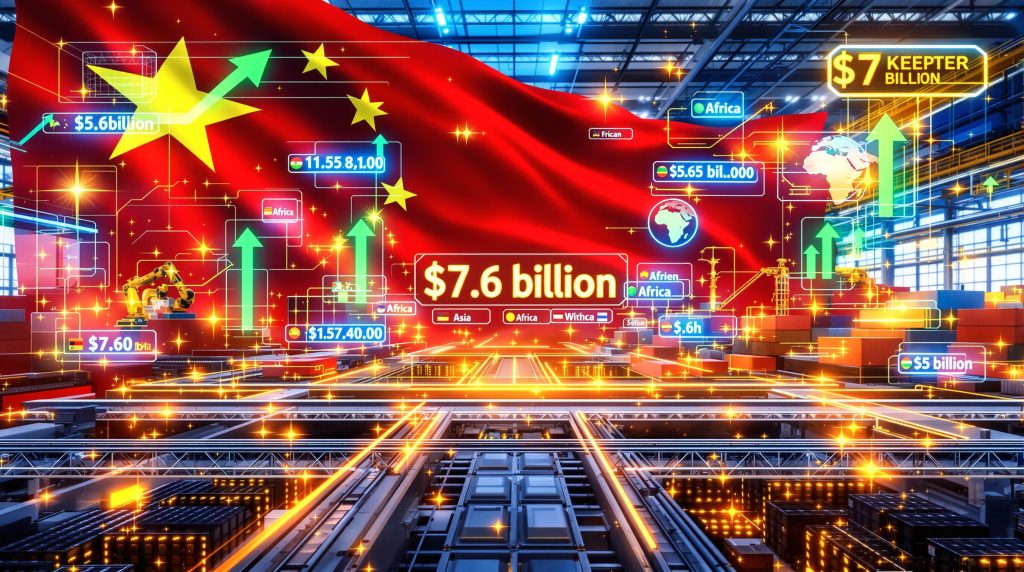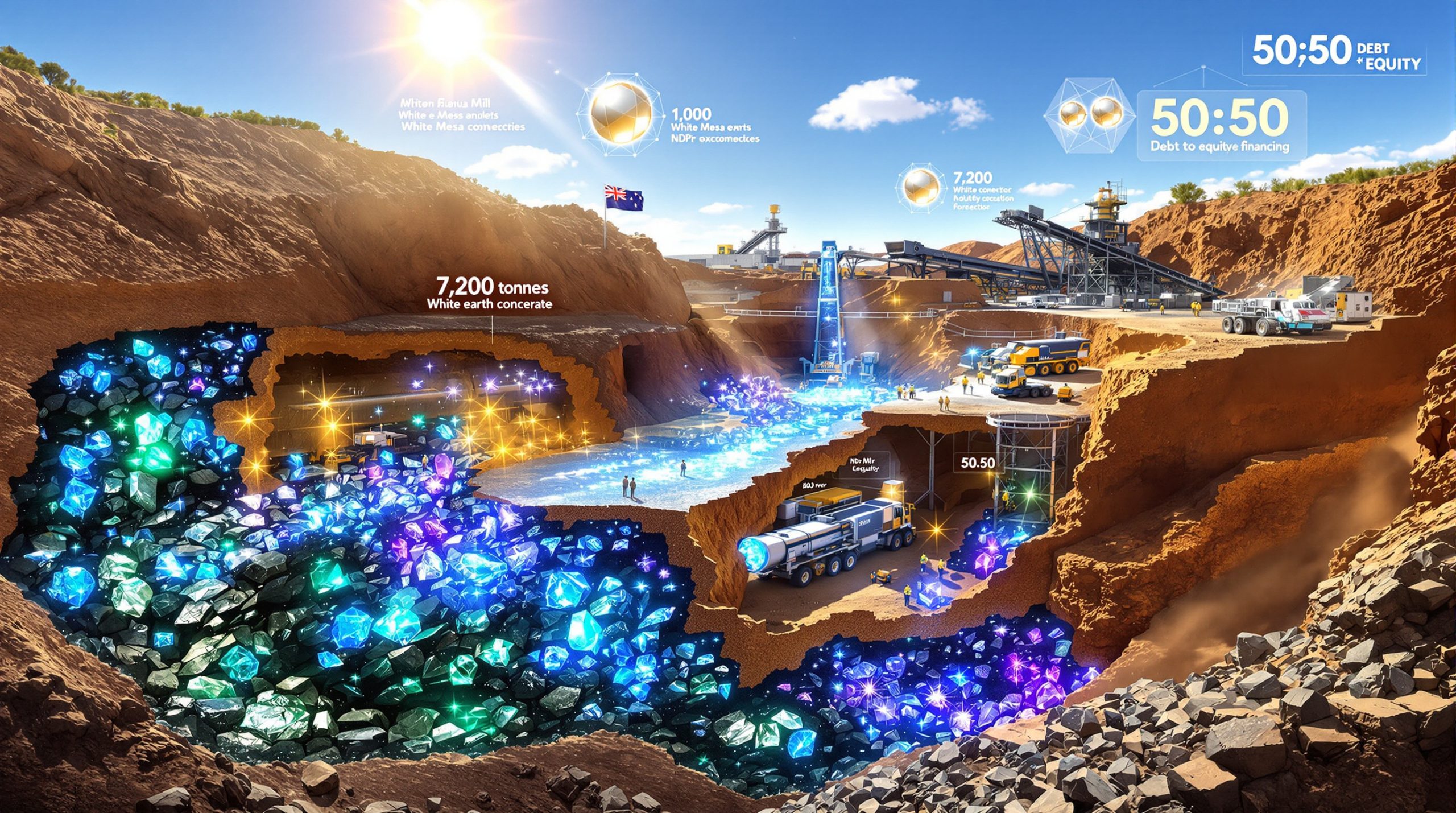China's Revolutionary Export Strategy Transforms Global Battery Markets
China's battery exports surge has fundamentally reshaped international energy trade patterns, establishing the nation as the world's premier battery manufacturing powerhouse. The country's lithium-ion battery exports reached an unprecedented $7.6 billion monthly by August 2025, marking a substantial 23% year-over-year increase that signals China's growing dominance in global energy storage markets.
This remarkable growth trajectory reflects China's strategic transformation into what industry analysts describe as the world's leading "electro-state" – a nation whose economic power stems from controlling critical energy storage technologies rather than traditional fossil fuel resources. Chinese manufacturers now control approximately 75% of global lithium-ion battery production capacity, positioning them at the centre of the worldwide transition to renewable energy systems.
The cost competitiveness of Chinese battery production has improved dramatically, with average per-kilogram export prices declining from $32.90 in 2020 to $20.10 in 2024. This 39% price reduction, combined with massive production scale, has made Chinese batteries increasingly attractive to international markets seeking affordable energy storage solutions for grid modernisation and renewable energy integration projects.
Government Investment Drives Unprecedented Manufacturing Expansion
Beijing's comprehensive industrial policy represents one of the most ambitious technology development programmes in modern economic history. The Chinese government invested over $230 billion in electric vehicle and battery metals investment subsidies between 2009 and 2023, creating the foundation for today's unprecedented manufacturing capacity expansion and export surge.
This strategic investment encompassed multiple critical dimensions of battery technology development:
• Research and Development Programmes: Government-backed R&D initiatives targeting advanced battery chemistry and manufacturing processes
• Manufacturing Infrastructure: State-supported facility construction and high-tech equipment procurement programmes
• Supply Chain Integration: Comprehensive vertical integration across the entire battery production ecosystem
• Export Market Development: Trade financing programmes and international market penetration support
China's National Energy Administration recently unveiled an ambitious plan to mobilise 250 billion yuan (approximately $32 billion) in new investment, targeting the construction of 180 gigawatts of new energy storage capacity by 2027. This massive investment programme demonstrates Beijing's commitment to maintaining global leadership in battery technology and manufacturing.
Overcapacity Crisis Accelerates International Expansion
The Chinese battery industry faced severe overcapacity challenges throughout 2024, with average utilisation rates falling to just one-third of maximum capacity. This dramatic oversupply situation created intense competitive pressure, forcing manufacturers to pursue aggressive international expansion strategies to maintain profitability and market share.
The overcapacity phenomenon has accelerated industry consolidation whilst pushing larger manufacturers to establish comprehensive global distribution networks. Furthermore, Chinese battery recycling insights reveal how manufacturers are addressing environmental concerns while expanding internationally. Chinese battery storage firms secured approximately 200 overseas orders totalling 186 gigawatt-hours in the first half of 2025 alone, representing a remarkable 220% year-over-year surge in international market penetration.
During the first half of 2025, 47 of 55 listed companies in the Chinese energy storage sector achieved profitability, demonstrating the industry's ability to adapt to challenging market conditions through international expansion and operational efficiency improvements.
Regional Market Distribution Reveals Strategic Shifts
The geographic distribution of China's battery exports surge reflects significant strategic rebalancing driven by trade policy considerations and emerging market opportunities. Non-OECD countries now account for over half of Chinese battery export growth, indicating a fundamental shift in global energy infrastructure development patterns.
Regional Export Performance Analysis:
| Region | Market Characteristics | Growth Drivers |
|---|---|---|
| Middle East & Australia | Nearly 60% of H1 2025 exports (combined) | Energy security initiatives, renewable integration |
| Southeast Asia | Rapid infrastructure development | Economic growth, ambitious renewable targets |
| Europe | Utility-scale storage focus | Energy transition, grid modernisation |
| United States | Less than 3% of total exports | Trade barriers, tariff restrictions |
The dramatic reduction in U.S. market penetration reflects the impact of comprehensive trade restrictions. American tariffs and regulatory measures have prompted Chinese manufacturers to diversify their market focus, with less than 5.34 gigawatt-hours (representing under 3% of total exports) directed toward the United States despite historically strong domestic demand for battery storage solutions.
Trade Policy Reshapes Export Destinations
The Trump administration's implementation of duties reaching up to 3,521% on solar imports from Vietnam, Cambodia, Malaysia, and Thailand in April 2025 has significantly influenced Chinese battery export patterns. However, the US-China trade war impact extends beyond these specific measures. These tariffs apply to shipments from major Chinese manufacturers including JinkoSolar and Trina Solar, creating substantial barriers to traditional export routes.
This geographic rebalancing has created new opportunities in markets with fewer trade restrictions. Chinese battery firms have established stronger relationships with Middle Eastern, African, and Southeast Asian customers, often offering more competitive pricing and flexible financing arrangements compared to constrained Western markets.
Vertical Integration Maintains Competitive Advantages
Chinese battery manufacturers have achieved unprecedented control over the entire production ecosystem, extending far beyond final assembly to encompass critical upstream components. This comprehensive vertical integration provides significant cost advantages and supply chain resilience compared to international competitors who must source components from multiple suppliers across different countries.
Chinese Market Dominance by Component:
• Anode Materials: 95% global market share
• Electrolyte Production: 85% global capacity control
• Battery Separators: 80% manufacturing dominance
• Cathode Materials: 70% production control
This supply chain control enables Chinese manufacturers to optimise costs, ensure quality consistency, and maintain production flexibility in response to changing market demands. The vertical integration strategy also provides strategic leverage in global trade negotiations and helps insulate Chinese companies from supply chain disruptions that affect competitors reliant on external suppliers.
Emerging Technology Leadership Secures Future Position
China's technological advancement extends beyond traditional lithium-ion batteries into next-generation energy storage technologies. In addition, lithium industry innovations highlight how different regions are developing competitive strategies. The country is projected to control over 80% of solid-state battery capacity and 96% of sodium-ion battery production by 2026, positioning Chinese manufacturers at the forefront of battery technology evolution.
These emerging technologies offer significant advantages over current lithium-ion systems, including enhanced safety characteristics, improved energy density, and reduced dependence on scarce raw materials. Chinese investment in these technologies suggests sustained competitive advantages as global energy storage markets evolve beyond current solutions.
Contemporary Amperex Technology Co. (CATL) Performance Highlights:
• H1 2025 Operating Revenue: RMB178.886 billion ($25.15 billion), up 7.3% year-over-year
• Net Profit: RMB30.485 billion, representing a 33.33% increase
• Growth Driver: Sustained rapid growth in energy storage cell demand driven by global clean energy transition
Export Control Policies Create Strategic Complications
Beijing's implementation of stricter export controls on critical battery materials and production technologies has introduced new complexities into global supply chains. These restrictions on graphite exports and lithium processing technology transfers reflect China's strategic approach to maintaining technological advantages whilst managing geopolitical tensions.
However, these controls also risk disrupting established customer relationships and encouraging international buyers to seek alternative suppliers. Consequently, the lithium supply-demand imbalance has become more pronounced as markets adjust to these restrictions. The balance between maintaining strategic leverage and preserving market share presents ongoing challenges for Chinese battery manufacturers seeking to sustain their export surge.
Profitability Pressures Intensify Competition
Despite remarkable volume growth, Chinese battery manufacturers face intensifying margin pressure as global battery prices continue declining. The combination of domestic overcapacity, aggressive international competition, and customer demand for lower prices has created challenging profitability dynamics across the industry.
Many smaller manufacturers have struggled to maintain viable operations, leading to accelerated industry consolidation. This consolidation ultimately benefits larger players with superior cost structures and international market access, but creates short-term market disruption and supply chain uncertainties for customers dependent on specific suppliers.
Industry Transformation Insight: According to Gao Jifan, chairman of Trina Solar, the industry paradigm has evolved from a simple export model to complex international production strategies. Companies now recognise that tariff mitigation requires not just overseas sales but also localised production capabilities in key markets.
Western Response Strategies Target Supply Chain Diversification
The United States and European Union have implemented comprehensive policy frameworks designed to reduce dependence on Chinese battery imports and develop alternative supply chain networks. These initiatives represent significant long-term challenges to China's market dominance, though implementation faces substantial technical and economic obstacles.
Key Western Policy Initiatives:
• U.S. Inflation Reduction Act: Substantial subsidies for domestic battery manufacturing and critical mineral processing
• Critical Mineral Security Programmes: Investment in alternative supply chains for lithium, cobalt, and rare earth elements
• Technology Transfer Restrictions: Limitations on Chinese access to advanced battery manufacturing technologies
• Trade Protection Measures: Comprehensive tariffs and anti-dumping duties on Chinese battery imports
Alternative Supplier Development Challenges
International efforts to develop non-Chinese battery supply chains have accelerated significantly, with Japan, South Korea, and European manufacturers receiving substantial government support to expand production capacity. However, these initiatives face considerable challenges including higher production costs, limited supply chain integration, and significant technology gaps compared to established Chinese manufacturers.
Geopolitical considerations and supply security concerns continue driving investment in alternative suppliers despite economic disadvantages. The timeline for achieving meaningful supply chain diversification remains uncertain, potentially extending China's market dominance through the remainder of this decade.
Global Investment Projections Support Continued Growth
Wood Mackenzie research projects that global investment in battery storage will reach approximately $1.2 trillion by 2034, supporting the installation of over 5,900 gigawatts of new wind and solar capacity during that period. This massive investment requirement creates substantial opportunities for Chinese manufacturers to maintain their export surge despite geopolitical headwinds.
The research emphasises that advanced, grid-forming battery technology will be crucial for maintaining grid stability as renewable energy sources become more prevalent. Chinese companies' leadership in these advanced technologies positions them favourably to capture significant portions of this expanding market opportunity.
U.S. Battery Storage Market Demonstrates Rapid Expansion
The United States battery storage market has experienced explosive growth, with utility-scale capacity increasing 15-fold since 2020 to reach nearly 30,000 megawatts. This remarkable expansion reflects the improving economics of battery storage, driven by a 40% decline in battery prices since 2022 and rapid renewable energy deployment.
U.S. Battery Storage Growth Metrics:
• Current Capacity: Just under 30,000 MW of utility battery capacity
• Growth Rate: 15-fold increase since 2020
• State Participation: 19 states have installed 100 MW or more of utility-scale battery storage
• California Leadership: Approximately 13,000 MW, representing 42% of national total
The levelised cost of electricity for utility-scale solar farms paired with batteries now ranges from $50-$131 per megawatt hour, making this combination competitive with new natural gas peaking plants ($47-$170 per MWh) and significantly more cost-effective than new coal-fired plants ($114 per MWh).
Market Evolution Toward Energy Storage Integration
The convergence of declining battery costs, improving energy density, and supportive policy frameworks has fundamentally altered electricity market dynamics. Solar plus battery combinations often demonstrate shorter deployment times compared to constructing new natural gas power plants, providing utilities with flexible, rapid-deployment solutions for meeting growing electricity demand.
Five years ago, the United States had 74 times more wind farm capacity and 30 times more solar capacity than battery capacity within its power generation system. Currently, there are only approximately 5 times more solar and wind capacity compared to battery capacity, demonstrating the rapid integration of energy storage into American electricity infrastructure.
California's Leadership Model
California serves as the national leader in utility-scale battery storage integration, with the California Independent System Operator managing approximately 21,000 MW of solar capacity and 12,400 MW of battery capacity. This integration allows the state to rely heavily on batteries during peak demand periods, demonstrating the practical feasibility of large-scale renewable energy systems supported by battery storage.
The California model provides valuable insights for other regions seeking to integrate substantial renewable energy capacity whilst maintaining grid reliability and managing peak demand requirements through advanced battery storage systems.
Strategic Implications for Global Energy Security
China's battery exports surge represents more than a trade phenomenon – it reflects the country's transformation into the world's dominant "electro-state," controlling critical energy storage technologies that underpin the global renewable energy transition. This shift mirrors historical patterns where nations built economic power through control of strategic energy resources, with batteries replacing oil as the key strategic commodity.
The implications extend far beyond trade statistics to influence global energy security, climate change mitigation efforts, and international geopolitical relationships. As the world accelerates its transition toward renewable energy systems, control over battery technology and production capacity becomes increasingly strategic for national security and economic competitiveness.
Future Trajectory Analysis
China's battery export surge appears positioned to continue through 2025 and beyond, supported by several structural advantages:
• Global Energy Transition Acceleration: Expanding renewable energy deployment requires massive battery storage capacity
• Emerging Market Demand Growth: Developing countries represent the fastest-growing markets for energy storage solutions
• Sustained Cost Competitiveness: Chinese manufacturers maintain significant cost advantages over international competitors
• Continued Technology Leadership: Ongoing innovation in battery chemistry and manufacturing processes
Chinese battery manufacturers are adapting to changing global conditions through geographic diversification, technology advancement, local production establishment in key markets, and the development of comprehensive energy storage solutions that extend beyond basic battery supply.
Whilst trade tensions and supply chain diversification efforts may moderate China's market share over extended timeframes, the country's current advantages in cost structure, manufacturing scale, and technology development suggest continued leadership in global battery markets. The challenge for other nations lies in balancing energy security concerns with the practical benefits of Chinese battery technology and competitive pricing in an era of accelerating renewable energy adoption and climate change mitigation requirements.
Further Exploration: Readers interested in understanding additional developments in China's battery industry can explore comprehensive analysis of China's dominance in battery markets, which provides detailed coverage of the nation's strategic advantages. Additionally, battery export surge analysis offers insights into how this growth is reshaping global clean technology markets and international energy infrastructure development patterns.
Looking to Capitalise on the Energy Storage Revolution?
Discovery Alert's proprietary Discovery IQ model delivers instant alerts on significant ASX mineral discoveries in the battery metals sector, empowering subscribers to identify actionable opportunities in lithium, cobalt, and critical mineral companies before broader market awareness. Begin your 30-day free trial at Discovery Alert today and position yourself ahead of the global energy transition curve.




